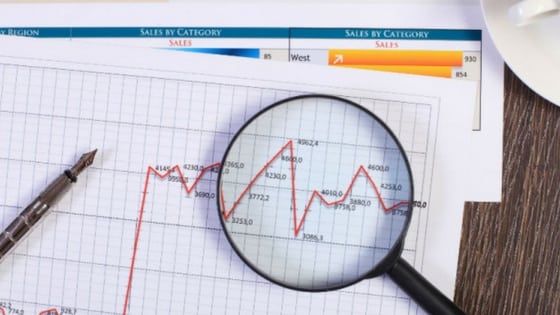FMCG Price Negotiation Strategies That Turn Retail Pushback into Partnership 🎢
Heineken went into the year confident. It pushed for price increases with major retailers, betting its strong brand would carry the move. On paper, the strategy stacked up—costs were climbing, and its premium positioning seemed to justify higher shelf prices. But there was one problem: the channel pushed back hard on the price negotiation.
Retailers pushed back. Some flatly rejected the increase. Others cut orders or shifted prime shelf space to competitors. Stock disappeared from shelves in France, Germany, the Netherlands, and Spain. US demand stayed soft under tariff pressure, while UK gains couldn’t fill the gap.
Heineken held firm in negotiations. But that stance came at a cost—a 5% drop in group revenue to €16.9B. It’s a textbook example of what happens when pricing decisions are made without retailer buy-in.
>Download Now: Free PDF How FMCG Can Generate Profitable Growth Faster
What Heineken Was Trying to Achieve in Price Negotiation
The goal was clear: protect margins. Rising costs—from raw materials to logistics—meant that holding prices steady would eat into profitability. Passing those costs along to customers seemed logical during price negotiation with major retailers.
Heineken also wanted to reinforce its premium positioning. Premium beers don’t compete with budget brands on price—that’s brand theory 101 and a common principle in FMCG channel strategy.
Yet the strategy, while solid in theory, ignored a key reality: when inflation fatigue hits, consumers and the product distribution channel face pressure to keep prices competitive. In those moments, leverage shifts away from suppliers, making a price agreement harder to reach.
Where Price Negotiation Went Off Track
The biggest misstep wasn’t the increase itself—it was the assumption that retailers would accept it without a clear, shared value story during the price negotiation.
Retailers are gatekeepers in the product distribution channel. They think in terms of category growth, not just supplier profitability. If they believe a price hike will slow sales or harm margins, they’ll say no, especially when other suppliers are knocking with sharper deals.
Timing compounded the problem. Retailers were already juggling multiple supplier price hikes across categories. Heineken’s request became just another increase in an already crowded queue, making a price agreement even harder to secure.
Losing Retailer Buy-In in the Product Distribution Channel
When a price negotiation fails, the damage extends well beyond one quarter’s numbers:
- Lost Shelf Space – Premium placement in the product distribution channel disappears, and visibility drops.
- Market Share Erosion – Competitors willing to compromise on their FMCG channel strategy move in fast.
- Brand Perception Risks – Consumers see gaps on shelves and assume lower demand or relevance.
For Heineken, the sales slide signalled more than a temporary setback—it was proof that its pricing power and distribution channel strategy needed a rethink.

What Should Have Happened for a Strong Price Agreement
Heineken could have shifted its approach from cost recovery to mutual value creation in its price negotiation with retailers. That means:
- Joint Growth Plans – Demonstrating how a price change could lift both parties’ sales value and strengthen the distribution channel.
- Promotional Support – Backing price moves with targeted campaigns to keep consumer demand strong.
- Tiered Pricing – Implementing smaller, phased increases rather than one blunt adjustment, a move often seen in effective FMCG channel strategies.
In pricing, it’s rarely just that you can raise prices—it’s that you can make the channel want you to.
How They Can Win Back Ground with a Smarter FMCG Channel Strategy
There’s still a way forward. Heineken can:
- Re-engage Retail Partners – Approach the next price negotiation by framing future price changes as shared wins backed by data and clear value stories.
- Innovate Within Price Points – Utilise limited editions, packaging changes, or value-added features to justify premium tags without sharp price hikes, strengthening its FMCG channel strategy.
- Adjust Promotional Strategy – Offer selective discounts or bundles to rebuild volume without eroding brand value.
A phased, partnership-focused approach can restore both trust and momentum in the distribution channel.
Lessons on Price Negotiation and Distribution Channel Strategy
This isn’t just a beer story—it’s a channel story. If you sell through retailers, remember:
- Past brand loyalty doesn’t guarantee future acceptance.
- Every price negotiation needs a defensible, shared logic.
- Timing and market context are as important as the number.
- Protecting margins is vital, but protecting relationships is how you keep those margins real.
In pricing, success isn’t about “winning” against the channel—it’s about making both sides feel they’ve won together.
〉〉〉 Get Your FREE Pricing Audit 〉〉〉
Building Price Negotiation Success in Any Channel
Heineken’s experience demonstrates that in today’s FMCG environment, retailers wield more influence than ever. With private labels growing and value sensitivity rising, every price change must pass a commercial litmus test: Will the channel accept it? If the answer isn’t a confident “yes,” the plan needs work.
For pricing teams, test the increase, map the risks, prepare the value story, and bring the channel into the price negotiation process early. For executives, make pricing alignment a strategic priority and measure success by both shelf presence and margin performance. Margins on paper don’t pay the bills—sales through the distribution channel do. Align first. Price second. Negotiate smarter.
The pressure to raise prices will always be there. The smart play is making sure your partners are with you when you do. If you’re facing pushback or want to strengthen your FMCG channel strategy, let’s talk. Together, we can turn price changes into wins that stick.
For a comprehensive view of maximising growth in your company, Download a complimentary whitepaper on How FMCG Can Generate Profitable Growth Faster.
Are you a business in need of help aligning your pricing strategy, people and operations to deliver an immediate impact on profit?
If so, please call (+61) 2 9000 1115.
You can also email us at team@taylorwells.com.au if you have any further questions.
Make your pricing world-class!
Related Posts
Leave a Reply Cancel reply
Categories
- marketing strategy (29)
- Organisational Design (15)
- Podcast (114)
- Pricing Capability (90)
- Pricing Career Advice (10)
- Pricing Recruitment (19)
- Pricing Strategy (315)
- Pricing Team Skills (13)
- Pricing Teams & Culture (30)
- Pricing Transformation (51)
- Revenue Model (29)
- Sales Effectiveness (28)
- Talent Management (7)
- Technical Pricing Skills (35)







